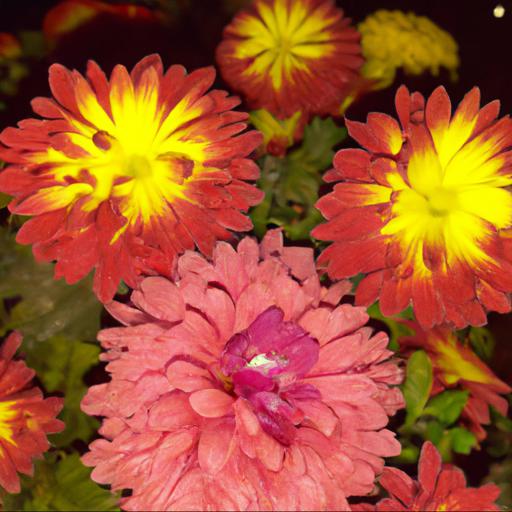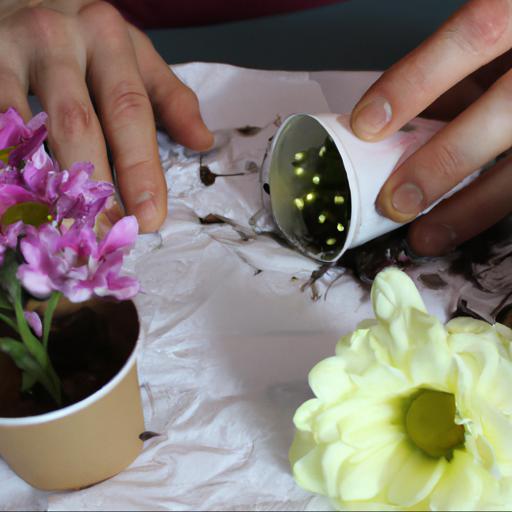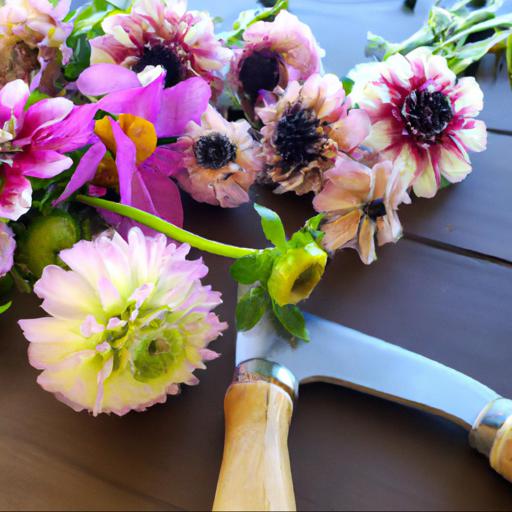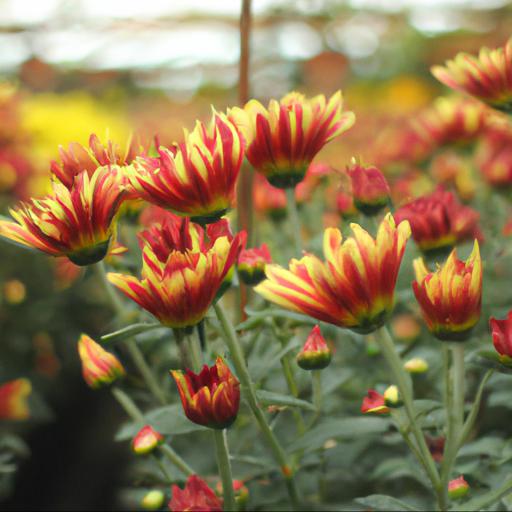Welcome to our blog about the cut flower growing year! This blog will provide an in-depth look at the different stages of the cut flower growing cycle, from planting to harvesting. We’ll also explore how to best care for and maintain your cut flower garden, as well as the various techniques and tools used in the cultivation process.
With our helpful tips and tricks, you’ll be able to make the most of your cut flower growing season and create a beautiful, vibrant garden that will last for years to come.
Benefits of growing cut flowers

Growing cut flowers is a rewarding and enjoyable way to create attractive displays throughout the year. By understanding the growing cycle of flowers, you can ensure that your garden is producing a bounty of beautiful blooms all year round.
The cut flower growing year consists of three distinct steps: planning, planting, and harvesting. Planning is essential to ensure that you have chosen the plants that will provide you with a variety of beautiful blooms in all seasons. Knowing the right time to plant and which flowers will thrive in your local climate is essential to ensure maximum impact throughout the year.
During the growing season, it’s important to look after your plants to avoid disease and pests. Regular pruning, deadheading, and weeding also help to promote natural development and increase the volume of your harvested blooms. Once harvested, the flowers are then processed with careful attention to detail to ensure that each stem is perfect for display.
Growing cut flowers offers a range of advantages, from creating beautiful displays in your home to upbeat seasonal decoration. Many of the popular flowers, such as tulips and roses, are available in nearly all the seasons which helps keep your garden blooming.
With well-planned planting, pruning and harvesting, you can ensure a bountiful supply of fresh, bright cut flowers all year round.
Tips for growing cut flowers

. As a UK gardening expert, I believe that if you want to succeed in growing beautiful cut flowers for use in your home, you need to have a well-informed understanding of the cut flower growing year.
Although you may have your own preferences for certain flowers, I highly recommend taking the time to read up on the individual requirements of each of the flowers you plan to plant so that they can flourish in your particular patch of paradise. Here are a few tips to help you along the way:The year in cut flower gardening can be broken down into the main seasonal stages: planting, growing, harvesting and maintenance. At each stage, it is important to understand the needs of your chosen flowers for optimal growth – both in terms of temperature, sunlight and planting depth.
By planting the right flowers at the right time of year, you will have a fantastic array of blooms on your doorstep in time for spring. Once your chosen flowers have been planted, the growing stage is when you need to keep your plants nourished. This stage requires regular watering and occasional pruning.
Some flowers will respond better to one method of pruning as opposed to another; understanding the needs of your chosen plants is paramount to success. Harvesting and maintenance is crucial in any cut flower growing project.
The key is to harvest your blossoms at the right moment, when their sensory properties reach the peak of their perfection. This can sometimes be a tricky feat, so it is important to keep track of the growth of your plants and understand the cycle of bloom of your chosen flowers.
Additionally, regular upkeep such as weeding and fertilising is important so as not to deny your plants the nutrients they need to thrive. All in all, the cut flower growing year is an exciting time for any gardener looking to brighten up their home. With the right knowledge and care, you’ll soon have a beautiful bouquet of blossoms in the palm of your hands.
Common challenges of growing cut flowers

The cut flower growing year is like a rollercoaster – it’s a fast paced, thrilling journey with a variety of challenges and rewards along the way. As a UK garden expert, I’ve seen first-hand the many challenges growers of cut flowers regularly face. One of the most difficult and common challenges growers face is the changing weather.
Cut flowers are sensitive to weather conditions, and growers must constantly adjust their planting and harvesting dates to ensure they provide good quality flowers. Growing cut flowers during chilly, summer months can be particularly challenging, as frost and cold temperatures can damage the plants and reduce their life once cut.
While there are ways to successfully adapt to weather changes, the unpredictability can make it difficult for growers to plan. Another major challenge facing growers of cut flowers is pest control. Many generations of cut flower growers have learnt to grow flowers using traditional physical controls such as hand-picking, netting, sprays and bouquets.
However, in recent years an increasing number of garden pests have become resistant to these physical controls and can be difficult to eradicate. Working with beneficial insects for biological control can be an effective way to address this challenge.
Finally, many cut flower growers face the challenge of managing soil fertility. Maintaining the right balance of nutrients, minerals and other organic materials is essential for a successful crop. Meeting the needs of each variety of cut flower is crucial, as different flowers require different mixes of soil composition.
Composting and cover cropping are two very useful fertility management techniques that can help maintain soil fertility long-term. The cut flower growing year can be a wild ride full of unexpected challenges.
From managing the weather to managing pests and soil fertility, cut flower growers must be resilient, determined and equipped with knowledge in order to successfully navigate their growing space. With the right preparation, these challenges can be overcome and a rewarding crop of beautiful blooms can be cultivated.
Our video recommendation
Bottom Line
Cut flower growers have a long and rewarding year ahead of them. From planting seeds and bulbs to harvesting, each step of the process requires careful attention and dedication. With the right knowledge and effort, growers can produce beautiful, vibrant blooms that can be enjoyed for years to come.
With the right care, cut flower growing can be a rewarding and enjoyable experience.
FAQ
What is the best time of year to start growing cut flowers?
The best time of year to start growing cut flowers is typically in the spring.
What are the most popular types of cut flowers?
The most popular types of cut flowers are roses, lilies, carnations, chrysanthemums, daisies, and tulips.
What are the most important factors to consider when growing cut flowers?
The most important factors to consider when growing cut flowers are soil fertility, temperature, light, water, and pest management.
What are the benefits of growing cut flowers?
The benefits of growing cut flowers include being able to enjoy the beauty of the flowers in your home, providing a source of income, and being able to share the beauty of the flowers with others. Additionally, growing cut flowers can be a rewarding and therapeutic activity.
What are the challenges of growing cut flowers?
The main challenges of growing cut flowers include controlling pests and diseases, providing adequate water and nutrients, and ensuring the flowers are harvested at the right time. Additionally, growers must also consider the cost of labor, the cost of materials, and the cost of marketing and selling the flowers.
How can I maximize the yield of my cut flower crop?
To maximize the yield of a cut flower crop, it is important to ensure the plants are well-nourished and receive adequate sunlight, water, and fertilizer. Additionally, it is important to practice good crop rotation, prune and deadhead regularly, and use pest control methods to keep the plants healthy.

